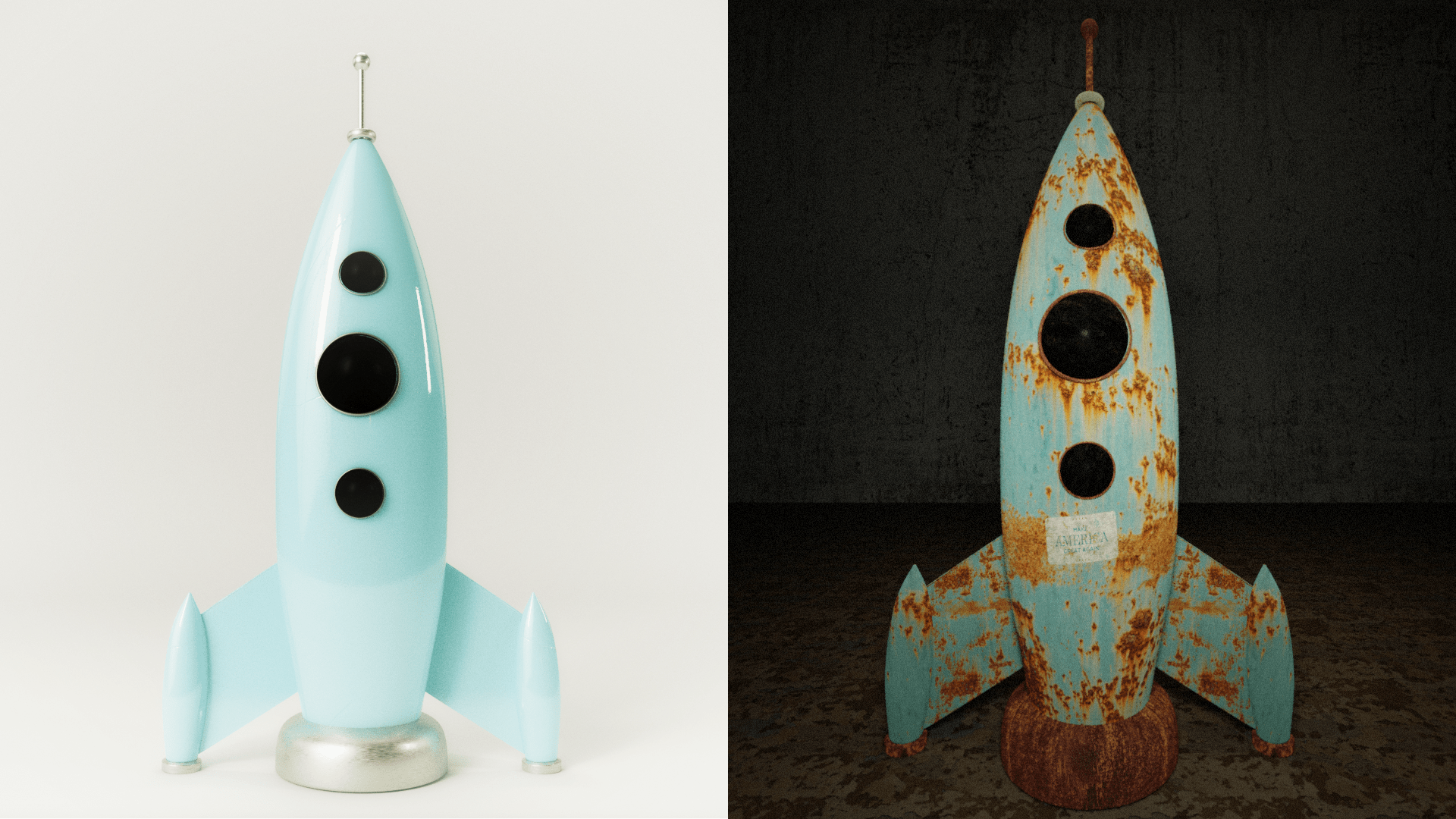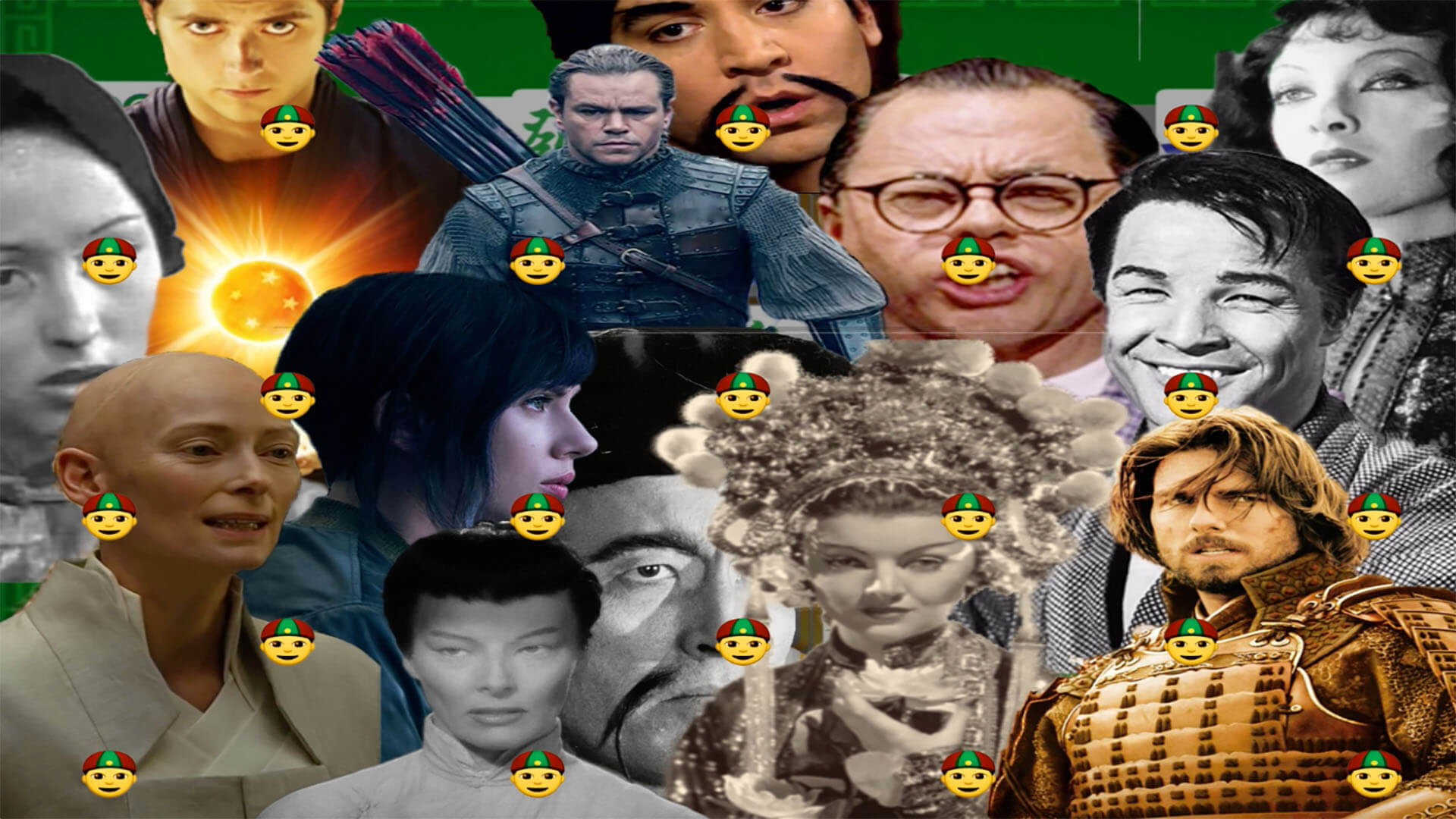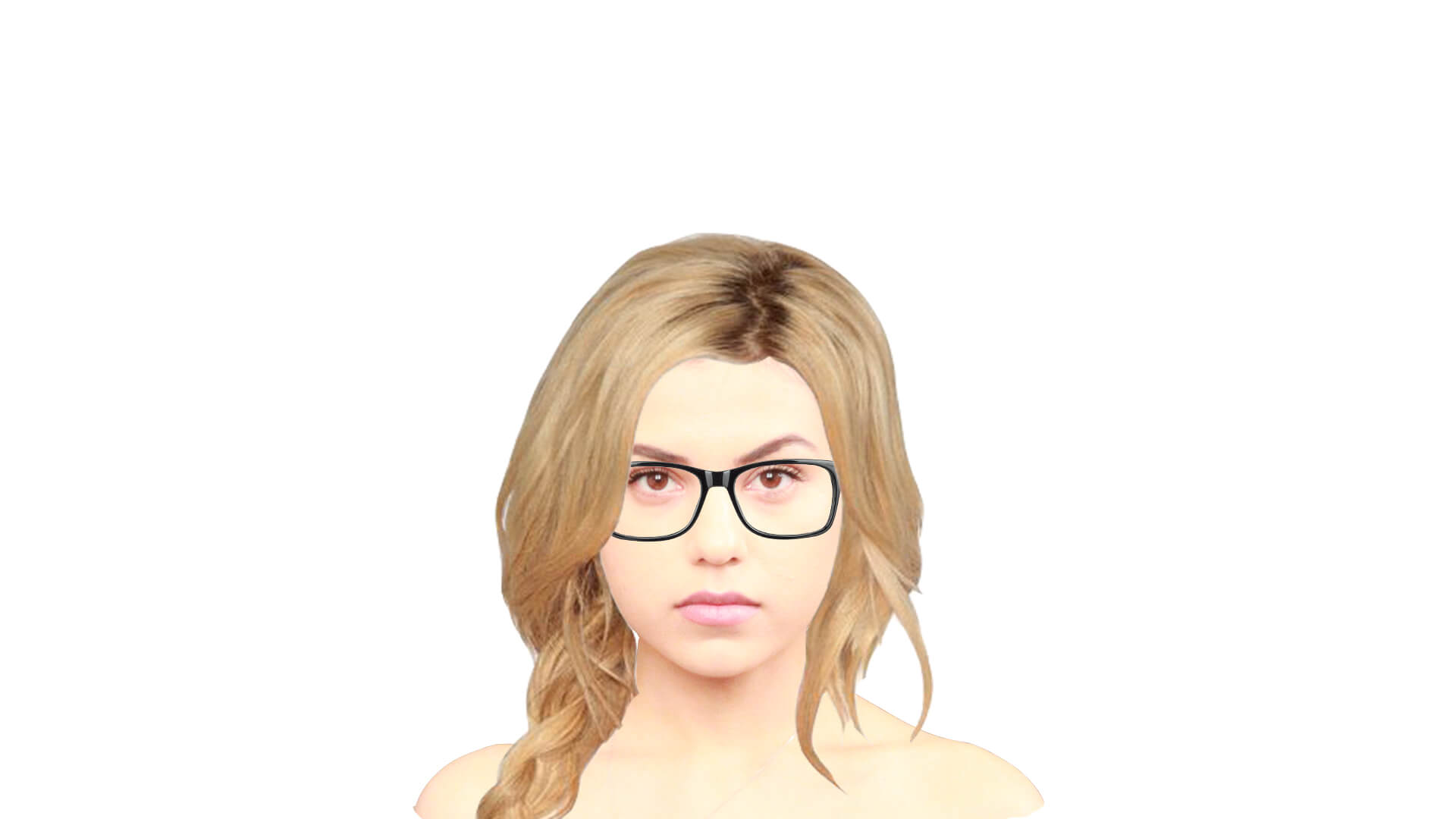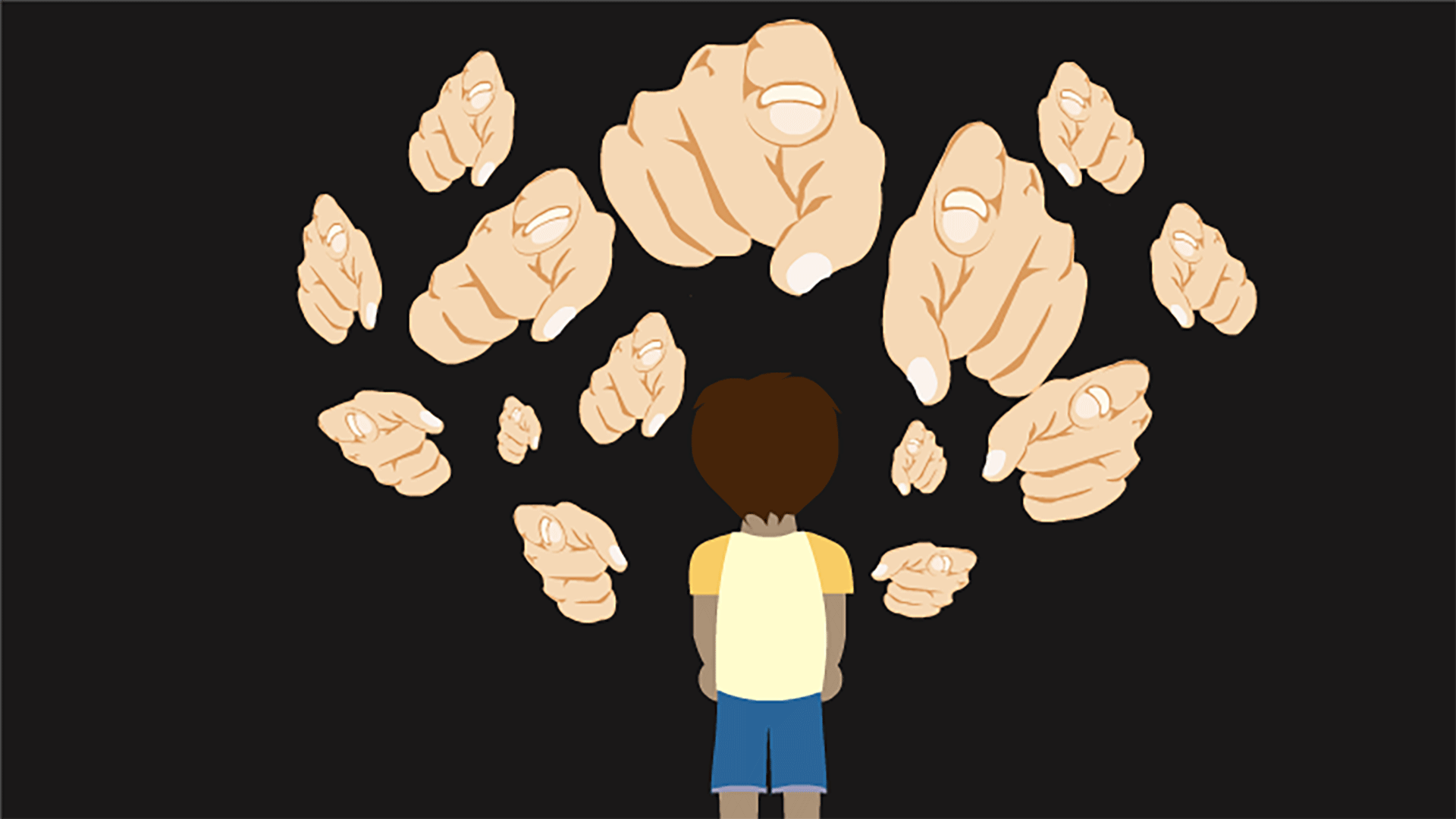Floor 2 Americans

Max Cohen
Remember The Future?, 2017, Digital slideshow, 01:05 min.
Remember The Future? by Max Cohen is a series of 3D rendered stills showcasing retro-futuristic objects such as rocket ships, humanoid robots, and ray guns. Each item is displayed side-by-side with another version of itself; the two versions illustrate the depictions of how people in the early 20th century envisioned the future versus how people view them now.
The left version of one object is clean and polished as if a photo was taken right after it was made in the 1950s. In contrast, the right version of the same object looks rusted and decayed as if the object was abandoned or forgotten. The deteriorated object appears as if it was newly discovered many years later. Each version appearing on the right side bears a decal that says “Make America Great Again.” While the left image represents futurist faith in progress, the right image represents conservatism, an idea that assumes that there was a specific time in the past when people got everything right.
Conservatism leads to people’s being overly persistent. They become unwilling to grow or accept changes in any form, and forget that the world is constantly changing, either for better or for worse.

Chase Kaye
We The People…, 2017, Video, 03:20 min.
We The People… by Chase Kaye, is a contemporary video piece, featuring appropriated footage from both traditional media and personal recordings. It serves as a criticism of American culture, especially the notion that the United States is the single greatest country on Earth, which is frequently touted as an undisputable truth.
We The People… does this by showcasing injustices faced by the American people, contrasting them with the indifference and carelessness commonly displayed by American politicians. In doing this, it gives us some insight as to why claims of America’s supreme greatness are still proclaimed so enthusiastically, which is the lack of proper media attention to issues of injustice and inequality.
This message also highlights the importance of personal recordings and social networks as a tool for citizens to be able to inform each other about the world, instead of just relying on traditional media, and sheds light on the disconnect between social media and broadcast media.

Joeleen Moy
Surface Tension, 2016, Video, 02:00 min.
Joeleen Moy’s work explores the world around her through the lens of her experiences as an Asian American and millennial. Her work Surface Tension explores the identity of Asian Americans in the United States and their struggles to face the issue of racism and stereotypes in their community today.
As a passionate storyteller, Moy opens an abstract perspective on how Asian Americans experience racial and stereotypical stigmas in Western Society. She appropriates pieces of pop culture to create collages and abstract images that are highly thought provoking with respect to the way immigrants are viewed and marginalized in the US. In this 3-minute video, fragments of art and popular culture are combined together to convey a message about underlying injustices and the mistreatment of immigrants, and specifically Asian Americans.

Aliza Naqvi
Labels, 2017, Animation, 01:32 min.
As an American Muslim, Aliza Naqvi focuses on how an individual can be perceived differently in a society just because of mere accessories. In her animation work, Labels, she layers accessories and hairstyles on and off the face of a constant individual to reflect different stereotypes. Through this visual experience, Naqvi addresses a topic of constant concern and discussion in today’s society, which is how other people perceive and label individuals into a specific category just because of their appearance.
We often hear people stress that they are not racist or have not labeled anyone. But in subtle life experience, people often unconsciously show the opposite behavior. Naqvi wants to use this animation as a medium to make people intuitively experience their own assumptions about various groups, sects, status, religions, gender and sexuality. The artist attempts to lift surface appearances so as to reveal a common inner self, and promote a more comprehensive and tolerant understanding of our society.

Kalin Chu
What Now?, 2017, Animation, 03:19 min.
In light of the recent modifications in immigration laws, Kalin Chu’s animation, What now? illustrates the challenges faced by immigrants in America. The rash political decisions that have been made recently have significantly affected immigrants and have instilled feelings of fear and animosity within the general population.
Chu uses this piece to increase awareness about this issue through an animated glimpse into the psychology of a young boy. The main character undergoes a whirlwind of unfortunate events that unfold leading to greater and greater emotional isolation. As the chaos unravels, families are separated, dreams are crushed, identities are lost, and uncertainty surrounds the future of immigrants.